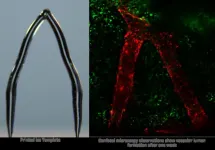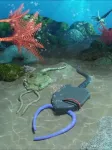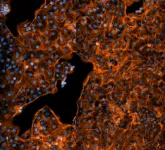(Press-News.org) There is no current evidence that AI can be controlled safely, according to an extensive review, and without proof that AI can be controlled, it should not be developed, a researcher warns.
Despite the recognition that the problem of AI control may be one of the most important problems facing humanity, it remains poorly understood, poorly defined, and poorly researched, Dr Roman V. Yampolskiy explains.
In his upcoming book, AI: Unexplainable, Unpredictable, Uncontrollable, AI Safety expert Dr Yampolskiy looks at the ways that AI has the potential to dramatically reshape society, not always to our advantage.
He explains: “We are facing an almost guaranteed event with potential to cause an existential catastrophe. No wonder many consider this to be the most important problem humanity has ever faced. The outcome could be prosperity or extinction, and the fate of the universe hangs in the balance.”
Uncontrollable superintelligence
Dr Yampolskiy has carried out an extensive review of AI scientific literature and states he has found no proof that AI can be safely controlled – and even if there are some partial controls, they would not be enough.
He explains: “Why do so many researchers assume that AI control problem is solvable? To the best of our knowledge, there is no evidence for that, no proof. Before embarking on a quest to build a controlled AI, it is important to show that the problem is solvable.
“This, combined with statistics that show the development of AI superintelligence is an almost guaranteed event, show we should be supporting a significant AI safety effort.”
He argues our ability to produce intelligent software far outstrips our ability to control or even verify it. After a comprehensive literature review, he suggests advanced intelligent systems can never be fully controllable and so will always present certain level of risk regardless of benefit they provide. He believes it should be the goal of the AI community to minimize such risk while maximizing potential benefit.
What are the obstacles?
AI (and superintelligence), differ from other programs by its ability to learn new behaviors, adjust its performance and act semi-autonomously in novel situations.
One issue with making AI ‘safe’ is that the possible decisions and failures by a superintelligent being as it becomes more capable is infinite, so there are an infinite number of safety issues. Simply predicting the issues not be possible and mitigating against them in security patches may not be enough.
At the same time, Yampolskiy explains, AI cannot explain what it has decided, and/or we cannot understand the explanation given as humans are not smart enough to understand the concepts implemented. If we do not understand AI’s decisions and we only have a ‘black box’, we cannot understand the problem and reduce likelihood of future accidents.
For example, AI systems are already being tasked with making decisions in healthcare, investing, employment, banking and security, to name a few. Such systems should be able to explain how they arrived at their decisions, particularly to show that they are bias free.
Yampolskiy explains: “If we grow accustomed to accepting AI’s answers without an explanation, essentially treating it as an Oracle system, we would not be able to tell if it begins providing wrong or manipulative answers.”
Controlling the uncontrollable
As capability of AI increases, its autonomy also increases but our control over it decreases, Yampolskiy explains, and increased autonomy is synonymous with decreased safety.
For example, for superintelligence to avoid acquiring inaccurate knowledge and remove all bias from its programmers, it could ignore all such knowledge and rediscover/proof everything from scratch, but that would also remove any pro-human bias.
“Less intelligent agents (people) can’t permanently control more intelligent agents (ASIs). This is not because we may fail to find a safe design for superintelligence in the vast space of all possible designs, it is because no such design is possible, it doesn’t exist. Superintelligence is not rebelling, it is uncontrollable to begin with,” he explains.
“Humanity is facing a choice, do we become like babies, taken care of but not in control or do we reject having a helpful guardian but remain in charge and free.”
He suggests that an equilibrium point could be found at which we sacrifice some capability in return for some control, at the cost of providing system with a certain degree of autonomy.
Aligning human values
One control suggestion is to design a machine which precisely follows human orders, but Yampolskiy points out the potential for conflicting orders, misinterpretation or malicious use.
He explains: “Humans in control can result in contradictory or explicitly malevolent orders, while AI in control means that humans are not.”
If AI acted more as an advisor it could bypass issues with misinterpretation of direct orders and potential for malevolent orders, but the author argues for AI to be useful advisor it must have its own superior values.
“Most AI safety researchers are looking for a way to align future superintelligence to values of humanity. Value-aligned AI will be biased by definition, pro-human bias, good or bad is still a bias. The paradox of value-aligned AI is that a person explicitly ordering an AI system to do something may get a “no” while the system tries to do what the person actually wants. Humanity is either protected or respected, but not both,” he explains.
Minimizing risk
To minimize the risk of AI, he says it needs it to be modifiable with ‘undo’ options, limitable, transparent and easy to understand in human language.
He suggests all AI should be categorised as controllable or uncontrollable, and nothing should be taken off the table and limited moratoriums, and even partial bans on certain types of AI technology should be considered.
Instead of being discouraged, he says: “Rather it is a reason, for more people, to dig deeper and to increase effort, and funding for AI Safety and Security research. We may not ever get to 100% safe AI, but we can make AI safer in proportion to our efforts, which is a lot better than doing nothing. We need to use this opportunity wisely.”
END
There is no proof that AI can be controlled, according to extensive survey
2024-02-12
ELSE PRESS RELEASES FROM THIS DATE:
The Complete Library of Charles Darwin revealed for the first time
2024-02-11
Charles Darwin – arguably the most influential man of science in history, accumulated a vast personal library throughout his working life. Until now, 85 per cent of its contents were unknown or unpublished.
This year, coinciding with Darwin’s 215th birthday, The Complete Work of Charles Darwin Online, the scholarly project helmed by Dr John van Wyhe at the National University of Singapore (NUS) Department of Biological Sciences, has released an online 300-page catalogue detailing Darwin’s complete personal library, with 7,400 titles across 13,000 volumes and items including books, pamphlets and journals. ...
Anne Ephrussi wins the FEBS | EMBO Women in Science Award 2024
2024-02-11
11 February 2024 – EMBO and FEBS are delighted to announce that Anne Ephrussi, emerita of EMBL Heidelberg, Germany, is the recipient of this year's FEBS | EMBO Women in Science Award. It celebrates outstanding female life scientists, recognizing their research achievements and contribution to a particular discipline over the past five years in Europe. The awardees are inspiring role models who help pave the way for future generations of women in science.
“It is a huge honour and most humbling to receive the FEBS | EMBO Women in Science Award. This recognition ...
3D ice printing can create artificial blood vessels in engineered tissue
2024-02-10
ROCKVILLE, MD – Over 100,000 individuals in the United States are currently in need of organ transplants. The demand for organs, such as hearts, kidneys, and livers, far exceeds the available supply and people sometimes wait years to receive a donated organ. Approximately 6,000 Americans die while waiting each year.
Tissue engineering to create lab-grown organs and tissues aims to close the gap between the availability of organs and the demand for transplants. But one big challenge in tissue engineering is creating blood vessel networks in artificial organs that work like natural ...
How ancient sea creatures can inform soft robotics
2024-02-10
ROCKVILLE, MD – Soft robotics is the study of creating robots from soft materials, which has the advantage of flexibility and safety in human interactions. These robots are well-suited for applications ranging from medical devices to enhancing efficiency in various tasks. Additionally, using different forms of robotic movement may also serve us well in exploring the ocean or space, or doing certain jobs in those environments.
To broaden our understanding of locomotion, Richard Desatnik, who works in the labs of Philip LeDuc ...
Why ventilators can be tough on preemie lungs
2024-02-10
ROCKVILLE, MD – Many premature infants need mechanical ventilation to breathe. However, prolonged ventilation can lead to problems like respiratory diseases or ventilation-induced injury.
Jonas Naumann and Mareike Zink study the physics of mechanical stress from ventilation at Leipzig University, in Leipzig, Germany and discovered some of the mechanisms that explain why premature lungs are especially sensitive to stress. Naumann will present their research at the 68th Biophysical Society Annual Meeting, to be held February 10 - 14, 2024 in Philadelphia, Pennsylvania.
When you breathe normally, your diaphragm and the muscles between ribs create a negative pressure inside the ...
Using ion beams to improve brain microscopy
2024-02-10
ROCKVILLE, MD – Improving the way scientists can see the microscopic structures of the brain can improve our understanding of a host of brain diseases, like Alzheimer’s or multiple sclerosis. Studying these diseases is challenging and has been limited by accuracy of available models.
To see the smallest parts of cells, scientists often use a technique called electron microscopy. Electron microscopy historically involves adding chemicals and physically cutting the tissue. However, this approach can change the way the cells and structures look, perturbing their natural state, and can limit resolution. ...
Faster monkeypox (mpox) testing through CRISPR
2024-02-10
ROCKVILLE, MD – Mpox, formerly known as monkeypox, is a rare viral disease that is spread through physical contact between people. Currently, testing for mpox requires lab equipment and can take a few hours to get test results. But new research suggests a way for faster testing that could be done in any clinic soon.
Md. Ahasan Ahamed, a graduate student mentored by Weihua Guan at Pennsylvania State University will present this research at the 68th Biophysical Society Annual Meeting, to be held February 10 - 14, 2024 in Philadelphia, Pennsylvania.
Though mpox symptoms are generally mild with fever, rash, and swollen lymph nodes, severe cases can occur and require medical attention. ...
New method could detect early ovarian cancer from urine samples
2024-02-10
New research by Joseph Reiner and colleagues at Virginia Commonwealth University shows promise for a urine-based test for ovarian cancer. Reiner will present their research at the 68th Biophysical Society Annual Meeting, to be held February 10 - 14, 2024 in Philadelphia, Pennsylvania.
Previous research showed that there are thousands of small molecules, called peptides, in the urine of people with ovarian cancer. While it is possible to detect those molecules using certain well-established techniques, ...
Scientists find new way to roll atomically thin nanosheets into scrolls
2024-02-10
Tokyo, Japan – Researchers from Tokyo Metropolitan University have come up with a new way of rolling atomically thin sheets of atoms into “nanoscrolls.” Their unique approach uses transition metal dichalcogenide sheets with a different composition on either side, realizing a tight roll that gives scrolls down to five nanometers in diameter at the center and micrometers in length. Control over nanostructure in these scrolls promises new developments in catalysis and photovoltaic devices.
Nanotechnology is giving us new tools to control the structure of materials at ...
New test for improving population-based colorectal cancer screening
2024-02-10
New test for improving population-based colorectal cancer screening
A new stool test appears to detect colorectal cancer precursors better than the current test. This could further reduce the number of new colorectal cancer cases as well as the number of people dying from the disease. A study led by the Netherlands Cancer Institute compared both tests. The results are published today in The Lancet Oncology.
Each year worldwide, approximately 1.9 million people are diagnosed with colorectal cancer, and 935,000 people ...









